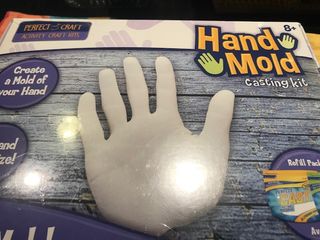Play
Are You (Unknowingly) Discouraging Your Child?
How to cultivate your child's ability to have fun.
Posted January 17, 2020

“I found gold,” yelled my daughter, ecstatic upon discovering the tiny plastic bar of gold inside the container of shimmering sand. We had just spent the last hour digging for plastic gold as part of an activity set my daughter received for her birthday. We had been given eleven boxes in total, each containing some sort of specific activity. Each would occupy my daughter (and me) for about an hour after which time the game would be used up and useless. The kits provided the opportunity to make clay hand-molds, decorate a jewelry box, dig for rocks in magic sand (finished), design window-ornaments, make perfume samples, design a glitter frame—and, well, you get the idea. Each gave us an opportunity to do something that at least one of the doers (if not both) did not want to do.
As parents, we feel increasingly dependent upon these manufactured activities to engage our children and provide us with something to do in the vast stretches of unfilled time that child-rearing includes. One woman (a wealthy woman) asked me if she thought it would be unreasonable to buy 365 of these boxes so she would have something to do every day with her 6-year-old. I told her I thought there might be other options.
These days, it appears that fun comes in a store-bought activity. If we don’t have an activity kit to entertain us, it can feel like we have nothing to do, literally nothing to do. Without a fresh box to open, we face a void, a big empty space of unfilled time, with nothing to put in it. If there’s no ready-made fun, there’s no fun.
When my brother and I were young, free time meant drawing, reading, and mostly, using our imagination to come up with activities inside and outside the house. I’m not suggesting that the way we grew up was better, but there are profound differences in our current approach to creating fun, free time, and parenting, and also real and disturbing consequences.
Our reliance on store-bought kits turns us into passive recipients of a manufactured experience. We rely on the activity boxes to capture and hold our attention, and consequently, are less inclined or able to use our own imagination to generate something interesting. We buy an already constructed system and play our designated part, but what we don’t do anymore is the very satisfying and engaging process of creating something out of nothing. We play our part, but we are simply doing what the instructions tell us to do, cooperating in the consumer matrix, receiving the experience of fun, being provided with the materials of engagement. As a result, our children’s and our own imagination, creativity, and generative abilities are diminishing.
So, too, the idea of fun as something that comes in a store-bought box is training us to look outside ourselves for that which can engage us. We turn to the marketplace for something that can stimulate us and hold our attention. But we are less inclined to view ourselves as the source of creativity or use our own minds to invent interesting activities. We operate from an outside-in paradigm, searching externally for something that can hold our attention for a few minutes, fill the void of emptiness until the glitter has run out. We are searching the mall rather than searching our own imagination and cultivating our interests into an interesting activity—from the inside out. Consequently, we are more and more dependent on external providers to feel engaged; fun is out-sourced to Doug and Melissa, Hasbro, and Disney. We are becoming helpless consumers in the experience of our own engagement.
This new approach to having fun also creates an attitude as if fun were a finite and self-contained experience. Fun is something we drop into for a few minutes, with the assistance of a game (a show or event will also suffice), but then get dropped out of when the game is up, when the entertainment disappears. These activity kits bring us to life, temporarily, but then, when they’re done, leave us feeling even more deadened and disconnected. When the hand mold is set or the stamp pad is dry, the IV connecting us to the experience of engagement and indeed to our own life source is removed.
When this most recent search for plastic gold with my daughter was completed, a deep sense of emptiness and even despair descended upon me, and seemingly my daughter as well. I watched my daughter’s mood shift from excitement to boredom and listlessness in a matter of seconds. My first reaction was to start frantically sifting through the remaining presents to find some kit, any kit, anything to make us feel engaged once again, to connect us to life. I was sure there was still a shoelace designing game somewhere in the rubble. But as I was ripping through the packages, both the ridiculousness and tragicness of the situation suddenly became clear. In that moment, I was believing my daughter's fun, her capacity (and mine, too) to be engaged and interested in life, depended on what was inside that bag.
My goal here is not to get you to throw away all the activity kits you received over the holidays. The games themselves are not the problem, they never are. The problem is how these store-bought boxes of fun, little by little, are changing our consciousness: the way we view ourselves, our abilities, and our very participation in life. These delightful packages which generate an hour’s worth of interest are not really as benign and delightful as they appear. They are, at a deeper level, encouraging us to turn away from and dismiss our own imagination, to lose interest in our interests, and to surrender to the marketplace as if it were the only source of our own fun. They are teaching us not to trust ourselves, to feel disconnected from our own life force, and helpless in the creation of our own engagement.
I am not here to shame you. As a parent, I get it, the indescribable gratitude we feel for the one hour of relief that such boxes offer us, relief from having to self-generate every moment of activity. I’ve been that mom with the crazed look in her eye after a full day of coming up with things to do for small children. Spending an entire day with a small child is akin to crossing the red sea. I am not here to shame, but I am here to encourage you to become more aware of what you, perhaps unknowingly, are teaching your children to believe about fun and what makes it possible.
The next time you find yourself reaching for a store-bought box of fun, stop for a moment and before opening, ask your child (and yourself) if there’s something that interests them or you to do, play or make. The point is to remember to consult your child’s imagination first, to look inside before outsourcing your experience. Inside is where our real, infinite source of engagement exists. And don’t rush the process. Our imagination is now trained to be provided with fun, and so it may take a little time to generate something of interest as your imagination kicks back into gear.
As parents, it's our job to teach our children to be interested and engaged in the world, and also in themselves. This ability, ultimately, is what will create a meaningful life. We want our kids to know that their most reliable and infinite source of fun or joy is within themselves, and to trust that they have everything they need to create their own experience.




